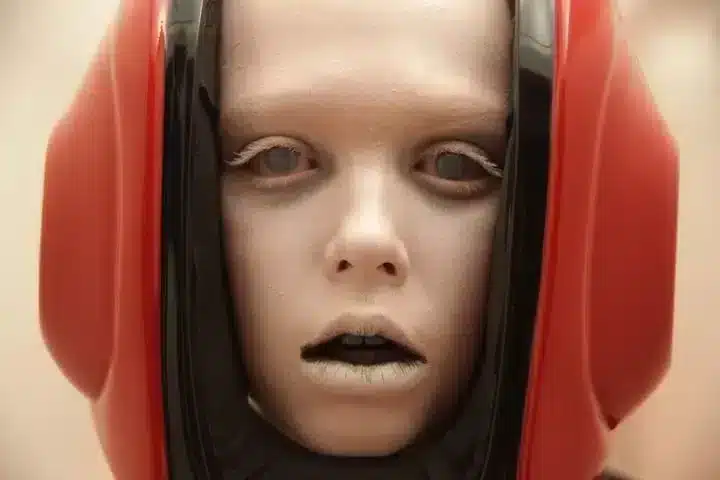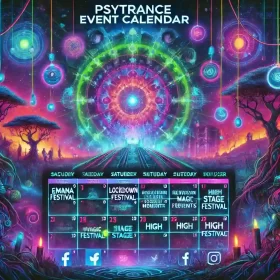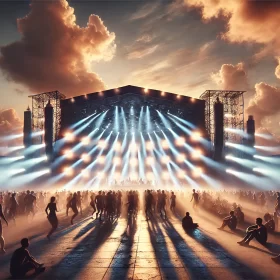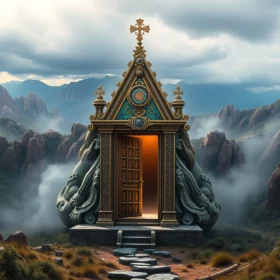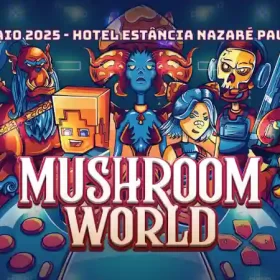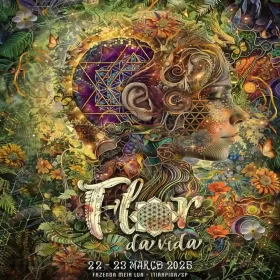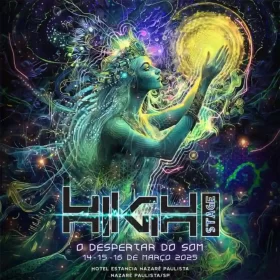The 2010 film Beyond the Black Rainbow is the fantastic debut of Canadian writer-director Panos Cosmatos. His father, George Cosmatos, was also a renowned director, known for films like Rambo and Cobra, which gave Panos an insider's view of how movies could be made. While Panos never intended to make the same kind of Hollywood films as his father, George's success financed Panos' first venture (royalties from Tombstone financed the bulk of the film).
The plot revolves around the Arboria Institute, a research facility founded in the 1960s dedicated to uniting science and spirituality. The institute works with neuropsychological drugs, sensory therapy, and “energy sculpting.” Unfortunately, the founder’s successor was corrupted by a far-reaching and unexplained psychedelic experiment. This film is ultimately a sci-fi horror film about new-age psychic research gone wrong.
The year is 1983. The setting outside the institute is a largely bland world of wood-paneled browns and beiges, but the threat of Cold War nuclear annihilation looms ever-present. By contrast, most of the film takes place within the walls of the Arboria Institute, whose cold, futuristic design is informed by the science fiction of the past (THX 1138, 2001, The Andromeda Strain). Reflecting on the 1980s period, Cosmatos said, “There was a very vivid feeling to the time: a mix of being mesmerized and intoxicated by pop culture and an omnipresent terror that the world would come to an abrupt, apocalyptic end… The film is set in a nostalgic landscape poisoned by fear and regret.”
Barry Nyle was the protégé of the institute’s founder, Dr. Mercurio Arboria. He was the subject of the aforementioned experiment, which is only shown in a brief, poignant flashback from 1966. Barry is dosed with a dropper on his tongue (LSD or something more powerful?) before descending into a mysterious, black, oily pit. While submerged, he becomes a waxy, multi-colored figure, contrasting sharply with the otherwise stark black and white scene to signify the psychedelic experience. He emerges from the darkness, vomiting the viscous liquid, in a calmly deranged state. This intense event drives him to murderous madness (there’s a cinematic parallel to Altered States here, even musically).
Thematically, Beyond the Black Rainbow is ultimately about control. Control over human captivity, as well as inner control over oneself. In the present day of 1983, Nyle holds a young woman captive at the institute. This woman, Elena, possesses extraordinary psychic powers that can only be subdued by means of a glowing, pulsating pyramid. She is docile and mute—her spirit is sad and broken, and she communicates only telepathically. She has spent her entire life in captivity. Nyle’s control over Elena is out of necessity and desire. She needs to be controlled because her telekinetic powers are incredible and highly dangerous. But her unbridled needs create a sexual tension that drives his every decision. He leads her to believe that she is sick and needs his help. As he plays the god of her world, he becomes mad with power and ultimately succumbs to the insanity he has kept at bay for the past 17 years.
The vintage, pulsating synthesizer soundtrack by keyboardist Jeremy Schmidt (aka Sinoia Caves) of the band Black Mountain is almost a character in itself. The prog-tinged synth-wave sounds echo throughout the institute, informed by Schmidt’s retro-futuristic work. Schmidt’s style falls somewhere between the early minimalist work of John Carpenter (Halloween, Escape From New York) and more modern composer Cliff Martinez (Neon Demon, Only God Forgives).
Stylistically, the film is a futuristic funhouse of fragments, a mod palette of bold primary colors. The ominous red glow dominates much of the installation, but especially projects the danger of Nyle’s interactions with Elena. Elena’s room is blue to evoke calm. She is pacified and controlled. Elena is a subject, but also a prisoner.
Norm Li's cinematography is innovative, spare, and deliberately meticulous. Shot on 35mm, the film was initially considered by some to be too expensive a medium for a low-budget film. Li found a way to realize the vision Cosmatos wanted to see with careful thought and planning, utilizing a specialized Panaflex camera that significantly reduced the cost of using film. The claustrophobia of the cramped interior spaces, coupled with the camera's framing, sets the mood of hopelessness and confinement. The 1966 flashback scene is almost a direct stylistic copy of 1989's The Begotten , a high-contrast black-and-white scene that took some effort to pull off and is surprisingly beautiful in its design.
Without revealing too many surprising plot details, many of the characters end up dead, with only one survivor. The ending leaves the viewer questioning whether the inner journey is truly more enlightening than the outer realms of nature itself. The psychedelic explorers among us are taught that the inner journey is paramount, but this film questions that validity. If one has never seen the outer world, doesn’t the outer experience seem more beatific?
Cosmatos says he wasn’t allowed to watch R-rated movies when he was young. When he went to the video store, he would look at the artwork on the VHS covers and imagine what the movie would be like. This unknown, imagined dream world of science fiction and horror informed his formative years. Because of this background of imagining plots based on production stills and covers, watching this film is like looking at a rippling reflection in water. It’s acted and filmed like a hazy memory of something that may or may not have happened.
Is Panos the new Jodorowsky (The Holy Mountain, El Topo)? He was certainly in tune with the psychedelic films of the king of midnight movies, and Cosmatos was definitely drawn to the dystopian future style of Lucas’s THX 1138 . The plot of Beyond the Black Rainbow consciously shares a story core with David Cronenberg’s Stereo (1969). According to Cosmatos, Beyond the Black Rainbow was visually inspired by Saul Bass’s 1974 film Phase IV , and the production design also indicates a deep affection for the mid-’80s films of Michael Mann (The Keep, Manhunter).
The original idea for Beyond the Black Rainbow, as written by Panos, was very detailed, but he peeled back layers to reveal a simplified plot composed of hints and suggestions. This style is similar to the “cut-up” methodology that William Burroughs used in novels such as Naked Lunch and The Soft Machine. By trimming away parts of the plot and revealing what lies beneath, new insights are revealed. This approach makes the plot more dreamlike and abstract, where the viewer is as much in the dark as most of the characters in the film. This creates a mood of abstraction—an idea of how things should be, but not necessarily how they are—a dream world. Was it dreamed or was it real?
